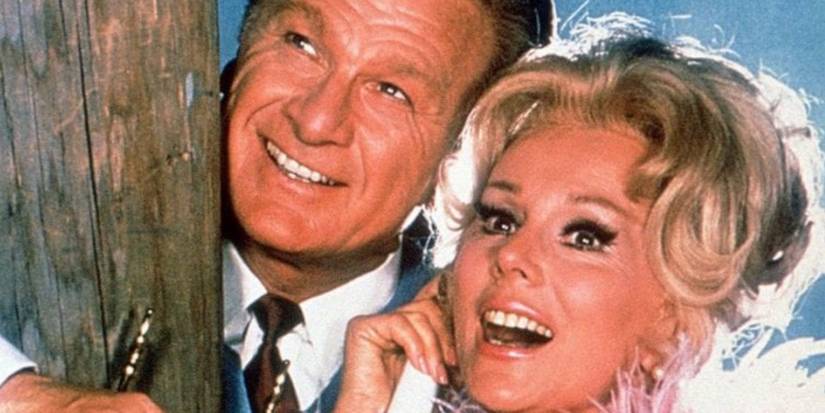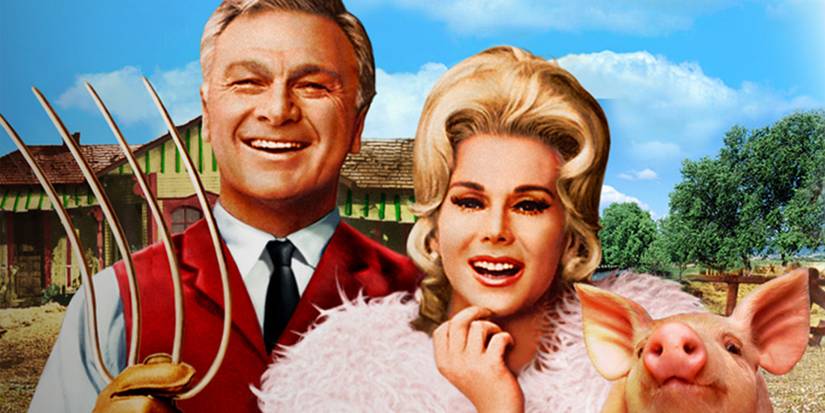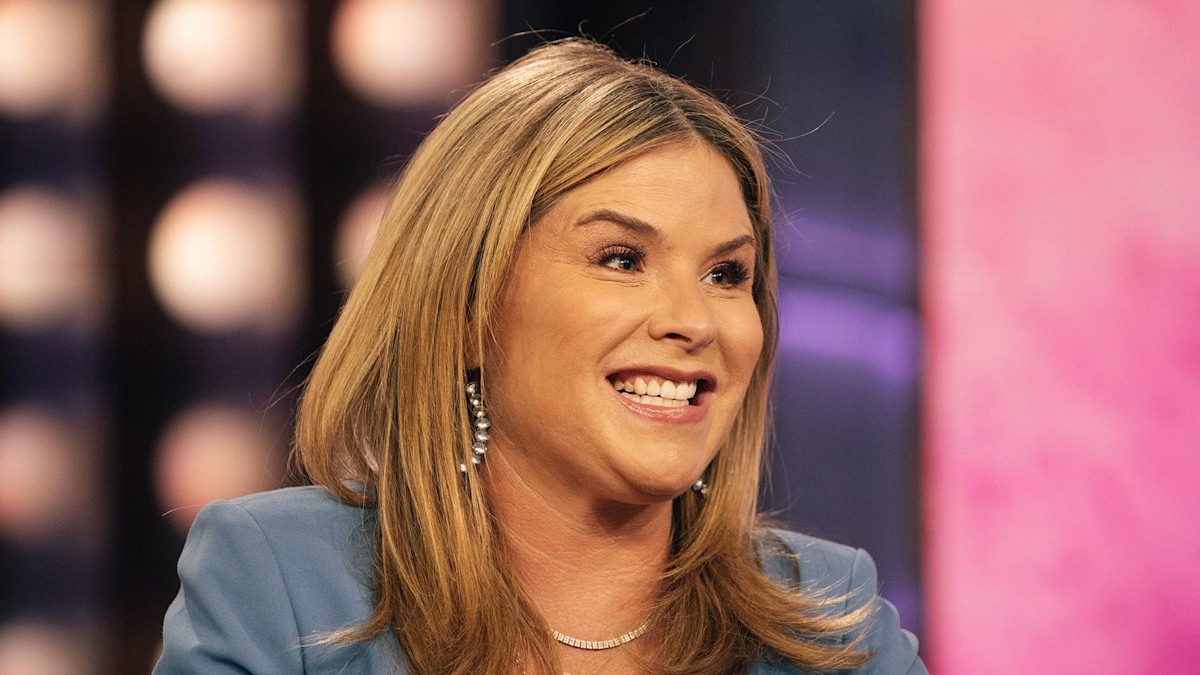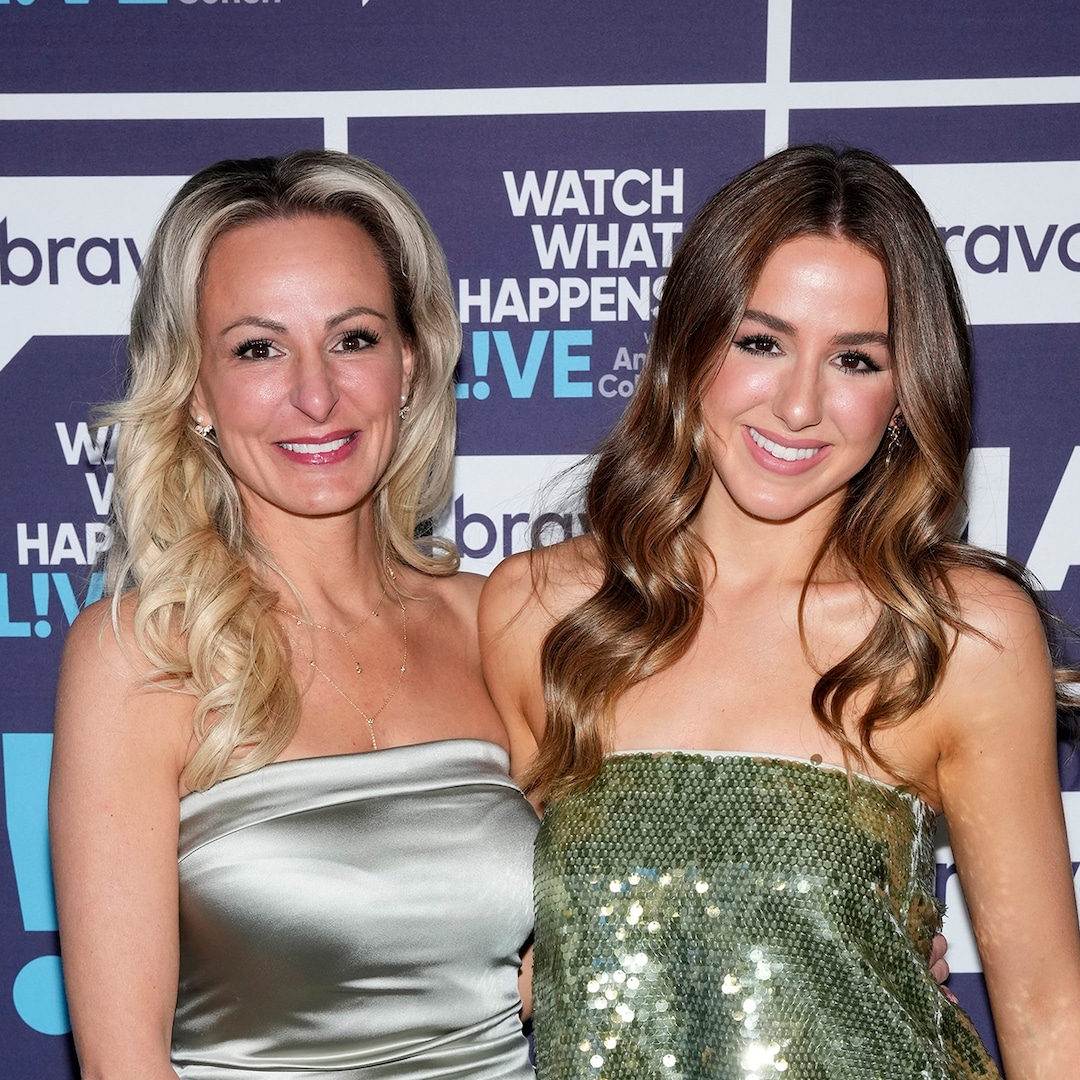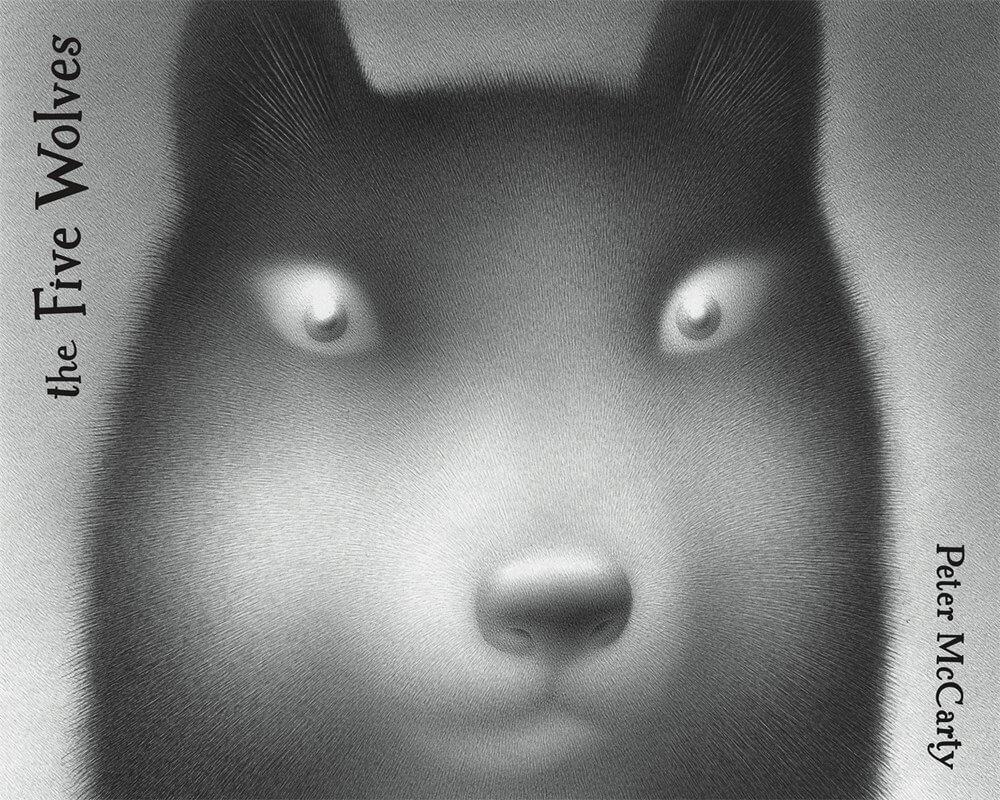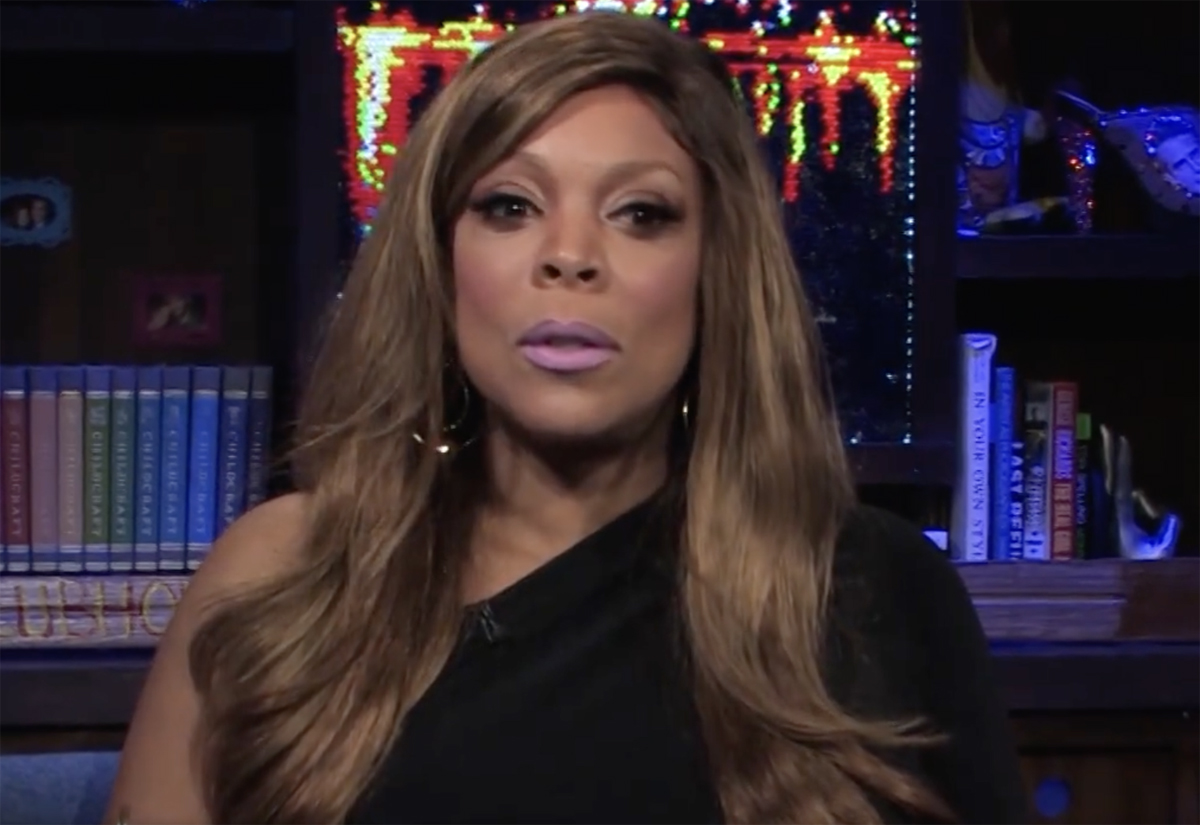Some sitcoms simply define a generation. Seinfeld and Friends are products of the ’90s, The Office lives rent-free in the heads of many who grew up in the 2000s, and TV history is full of plenty of others. Back in the mid-1960s, that show was called Green Acres. The series, with plenty of slapstick humor and some oddball comedic elements, wrestled with the tension between big city life and the rural farmscapes of middle America long before the concept became commonplace on the Hallmark Channel. Unfortunately, despite the show’s consistent ratings, the television landscape changed beneath Green Acres, cancelling the sitcom abruptly after its sixth season. But why?
‘Green Acres’ Was a Classic Network TV Sitcom
Always a bit absurdist from the get-go, the main premise of Green Acres was that longtime New York City attorney Oliver Wendall Douglas (Eddie Albert) decides it’s time to move on from the Big Apple so he can fulfill his lifelong dream of being, well, a farmer. As he and his young wife, Lisa Douglas (Eva Gabor) — who adores the city and all the department stores in it — move on from Manhattan, trading in the concrete jungle for the traditional “American dream.” Like many shows of the era including Gunsmoke, The Adventures of Superman, and Dragnet, Green Acres had its origins in radio. Titled Granby’s Green Acres, the series had only eight episodes and aired on CBS’ radio stations in the summer of 1950. Unlike some of the other shows that jumped from radio to television, it took some time before Green Acres came to life on the screen, but by 1965, CBS was ready.
After being swindled into purchasing a broken-down farm by the local Hooterville grifter, Mr. Haney (Pat Buttram), Lisa wanted to high-tail it away from the Green Acres Farm from basically the moment they arrived. However, Oliver insisted on giving his midlife crisis the regular old college try. With hired hand Eb Dawson (Tom Lester) by their side, the Douglas duo turn the whole thing around. It wasn’t long before Green Acres began to capture the hearts of millions nationwide. According to the Nielson ratings recorded by Tim Brooks and Earl Marsh in The Complete Directory to Prime Time Network and Cable TV Shows, 1946-Present, the rural-based sitcom debuted as the 11th highest-rated program in the October 1965 to April 1966 television season, with 24.6 million homes tuning in. The following year, it rose to the Top 10, peaking at #6 just under The Jackie Gleason Show. For reference, Bonanza was the top-rated program that season, and as far as rural comedies were concerned, Green Acres was only beaten out by The Andy Griffith Show.
We noted before that Green Acres was something of an absurdist comedy, and the program really leaned into those “absurdist” elements come Season 2 when a pig (yes, really) became a member of the regular cast. That’s right, although the Ziffels — Fred (Hank Patterson) and his wife Doris (Barbara Pepper, Fran Ryan) — had been introduced in the first season as carryovers from another CBS sitcom, Petticoat Junction, Arnold Ziffel was featured more prominently from the second season onward. Arnold was Fred and Doris’ hyper-intelligent pig who could understand English, loved watching classic TV Westerns, and even attended school. To the Ziffels, Arnold was the son they never had — and they treated him as such. Seriously, Green Acres was a strange sitcom, but it always managed to pull a laugh.
‘Green Acres’ Was One of Many Rural-Based Sitcoms of Its Era
Of course, Green Acres wasn’t exactly a one-of-a-kind program, even when you consider pigs like Arnold. The 1950s and ’60s produced a whole host of situational comedies that leaned into postwar rural living. After all, the general audience wanted to settle down, take things slow, and get back to a more traditional way of living after such an enormous global conflict. The attention was inward toward the heartland of America, and so shows like The Andy Griffith show (and later its spin-off Mayberry, R.F.D.), Hee Haw, The Beverly Hillbillies, and the aforementioned Petticoat Junction filled that void. Those who wanted drama had television Westerns, but those who wanted to laugh were given shows like Green Acres.
Interestingly, these shows often played upon one another, with Petticoat Junction and Green Acres often sharing (and swapping) characters as well as its general setting of Hooterville. These shows were so often interconnected that fans almost couldn’t get the full story for many of the supporting characters without watching both programs. “Until Petticoat Junction left the air in the fall of 1970, there was always a certain amount of interplay between it and Green Acres,” Brooks and Marsh wrote about their collaborative nature, “with characters from one series making guest appearances on the other.” Although Petticoat Junction began two years before Green Acres was added to CBS’ roaster, the latter ended up outlasting the former. Of course, the Hooterville shows weren’t the only major Green Acres crossovers.
In addition to spending an exorbitant amount of time with its neighboring broadcast, Green Acres also crossed over with The Beverly Hillbillies — long before television crossovers became commonplace. For one thing, Season 2’s “The Beverly Hillbillies” was meant as an almost parodic homage to the nine-season sitcom where the citizens of Hooterville put on a performance based on the program. But things got a bit muddy when episodes of The Beverly Hillbillies began featuring characters from the Green Acres world, namely in Season 7’s “The Thanksgiving Spirit,” where the Clampetts from the former sitcom visit Hooterville and encounter the cast of the latter (as well as faces from Petticoat Junction). Why did the Clampetts travel all the way to Hooterville? To visit some distant cousins, of course. Indeed, they would return later that season for “Christmas in Hooterville” as well, where poor Eb continues to pine for Elly May Clampett (Donna Douglas).
The Rural Purge Axed ‘Green Acres’ Despite Its Solid Ratings
Although it fell behind in the rankings as the years went by, Green Acres consistently drew in around 22 million viewers on average each week on CBS. Though that dipped a little in the show’s final two seasons, the ratings themselves remained quite strong. But even after it continued to pull in an audience, things began to shift in the late 1960s as networks began to pursue more content aimed toward urban audiences. The ’70s was full of urban-based sitcoms, police procedurals, legal dramas, and other programs that were the furthest thing from rural or Western content (though a few programs slipped through the cracks). In 1971, the Big Three began axing all of their small-town dramas and comedies, and Green Acres was no exception. As recorded by Wide Open Country, Green Acres star Pat Buttram famously quipped that “it was the year CBS canceled everything with a tree—including Lassie.“
This wave of mass cancellations was called the “rural purge” due to its fixation on shows like Green Acres, Hee Haw, Mayberry R.F.D., and even hit Westerns like The High Chaparral and The Virginian. As The Washington Post noted decades later, “[It] is still recalled bitterly by the show’s producers and performers, as well as by their old fans.” In hindsight, it wasn’t the best look for the networks, but they defended it with their forward-thinking. They knew the rural nature of many of these programs was not the future of broadcast television, even if the audience was still there for it. Fortunately, this wasn’t the end of Green Acres forever. In 1990, at a time when many of these rural or Western-based programs were returning to television in TV movie capacities, CBS aired Return to Green Acres, which reunited the cast for one more wacky outing after nearly 20 years. After the success of the television film, leading stars Eddie Albert and Eva Gabor reprised their roles as the Douglases once more for The Legend of the Beverly Hillbillies special, a final crossover with CBS’s longest-running rural sitcom.
For years, folks have tried to remake Green Acres, but to no avail. The truth is, the magic of the original sitcom cannot be replicated, not in this day and age. The Douglases and their longtime Hooterville friends will forever be remembered as some of network television’s most colorful characters, characters who always knew how to make us laugh. In the end, Green Acres will always be remembered for its catchy opening theme and sequence, its hilarious take on rural living, and all the strangeness of the oinking Arnold Ziffel.

- Release Date
-
1965 – 1971-00-00
- Directors
-
Richard L. Bare, Ralph Levy
- Writers
-
Al Schwartz, Jay Sommers, Sam Locke
-

-

Eddie Albert
Oliver Wendell Douglas
-

-


